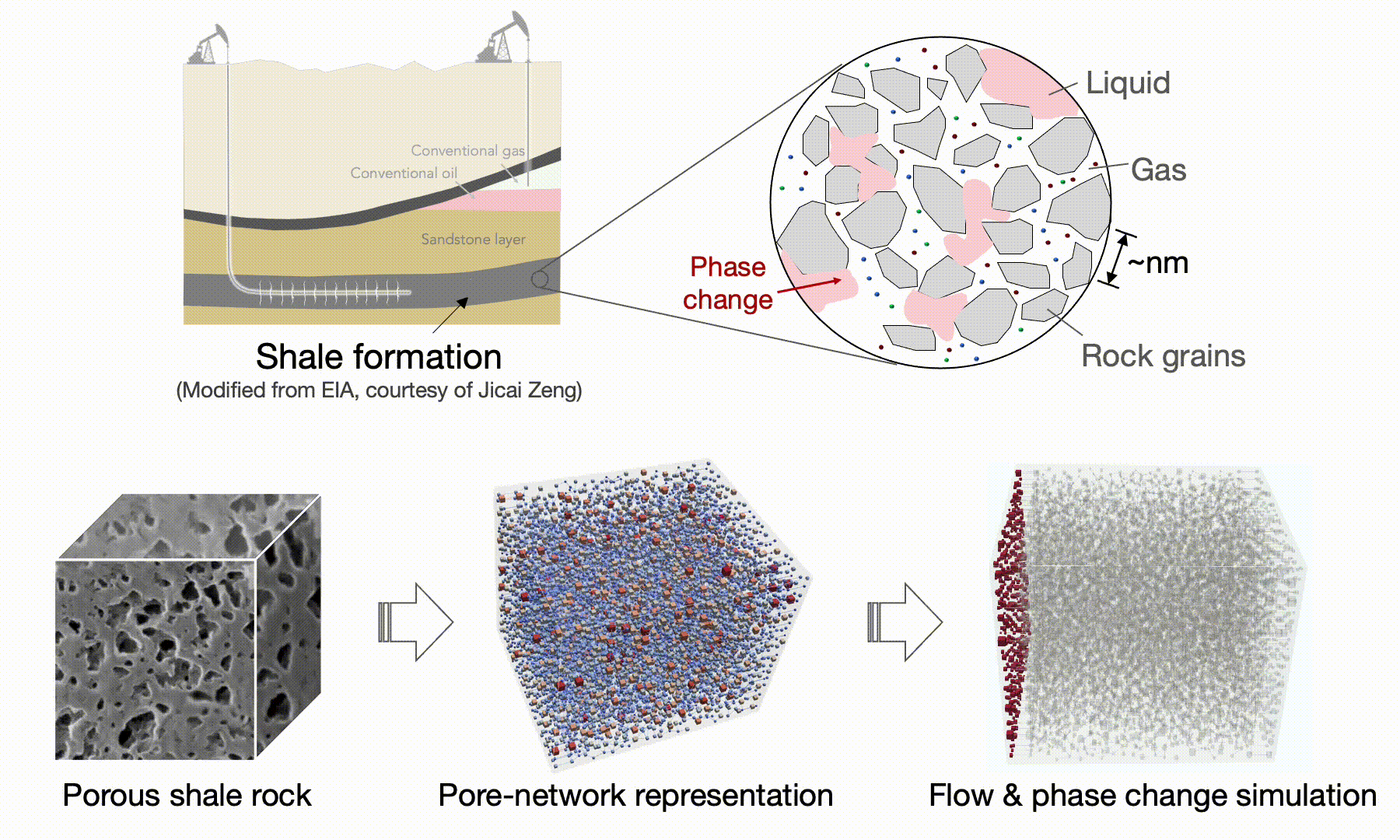PFAS transport in partially water-saturated soils
The wide spread of Per- and polyfluoroalkyl substances (PFAS)—a group of interfacially-active emerging contaminants—has been posing great health risks to subsurface drinking water resources. Quantifying PFAS transport in the subsurface has been challenging due to the accumulation of PFAS at air-water interfaces in partially water-saturated soil pore spaces, and their partitioning at different air-water interfaces including those residing between soil grains and those arising in thin water films on soil grain surfaces. To address these challenges, I develop mechanistic pore-scale models and analytical upscaling frameworks that capture the physical transport mechanisms unique to PFAS. The ultimate goal is to bridge the gap between pore-scale understandings and field-scale modeling concepts for better characterizing the PFAS transport behaviors and developing effective remediation strategies in the real-world subsurface environment.

Relevant materials: Chen & Guo, WRR (2023) [PDF]
Water evaporation and heat transfer in soils near the land surface
Evaporation of water from soils is a key physical process governing mass and energy fluxes at the land surface. Soil evaporation is controlled by a wide range of factors including atmospheric conditions such as temperature, humidity, and air flow, as well as flow and transport processes in the soil media. The overarching goal of the project is to develop coupled pore-scale modeling frameworks to understand and quantify the fundamental pore-scale processes in soils that govern evaporation at the land-atmosphere interface, with a focus on the impact of thin water films.

Relevant materials: Chen et al, AGU Fall Meeting (2022)
Nanometer-scale pore spaces in porous materials induce anomalous physical behaviors in terms of fluid flow, chemical compound transport, and thermodynamic phase change. These anomalous behaviors—commonly observed for oil and gas in shale formations—have posed significant challenges for accurate prediction of shale oil/gas production. Current theories either underrepresent the complex multiscale pore structures by using molecular dynamics or oversimplify the nanoconfined flow mechanisms by using Darcy-scale continuum models, causing inconsistent predictions with experimental and field observations. To bridge the gap, I develop a group of novel pore-network modeling frameworks to examine how complex nanopore networks control phase change and compositional flow dynamics. The objectives are to derive new constitutive relationships for reservoir-scale models and improve quantitative predictions of hydrocarbon production from complex shale formations.

Relevant materials: Chen et al, WRR (2020) [PDF]; Chen et al, CEJ (2021) [PDF]; Chen et al, URTec (2021) [PDF]